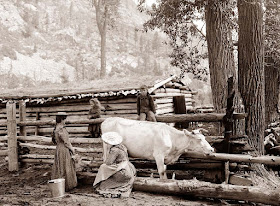 |
| Bevin Boys report for duty in 1943 (Express) |
The blog "ART and ARCHITECTURE, mainly" earlier this week had
an interesting post on something I knew nothing about, despite my once-future career as a military historian. It seems that Britain conscripted nearly 50,000 men to work in its coal mines, in place of the military service, during the period 1943-48. From the blog:
Coal was essential for military production during WW2; somehow Britain had to match the quotas needed to keep factories churning out the munitions required at the front. And as Britain was unable to import coal in wartime, the production of coal from local mines had to be increased. But how? 36,000 miners were already conscripted for army duty and had left their collieries.
Ernest Bevin, wartime Minister of Labour and National Service and a former Trade Unionist, believed the shortage could be remedied by using conscripted men to fill the vacancies in the mines, keeping production at the rates required. In Dec 1943 he announced a scheme in Parliament.
A ballot would take place to put a fixed percentage of conscripted men into the underground collieries rather than into the armed services. “We need 720,000 men continuously employed in this industry. This is where you boys come in. Our fighting men will not be able to achieve their purpose unless we get an adequate supply of coal.” Any refusal to comply with the Direction Order would result in a heavy fine and/or imprisonment under the Emergency Powers Act in force back then.
There's lots more on the story at the blog, worth a read.













